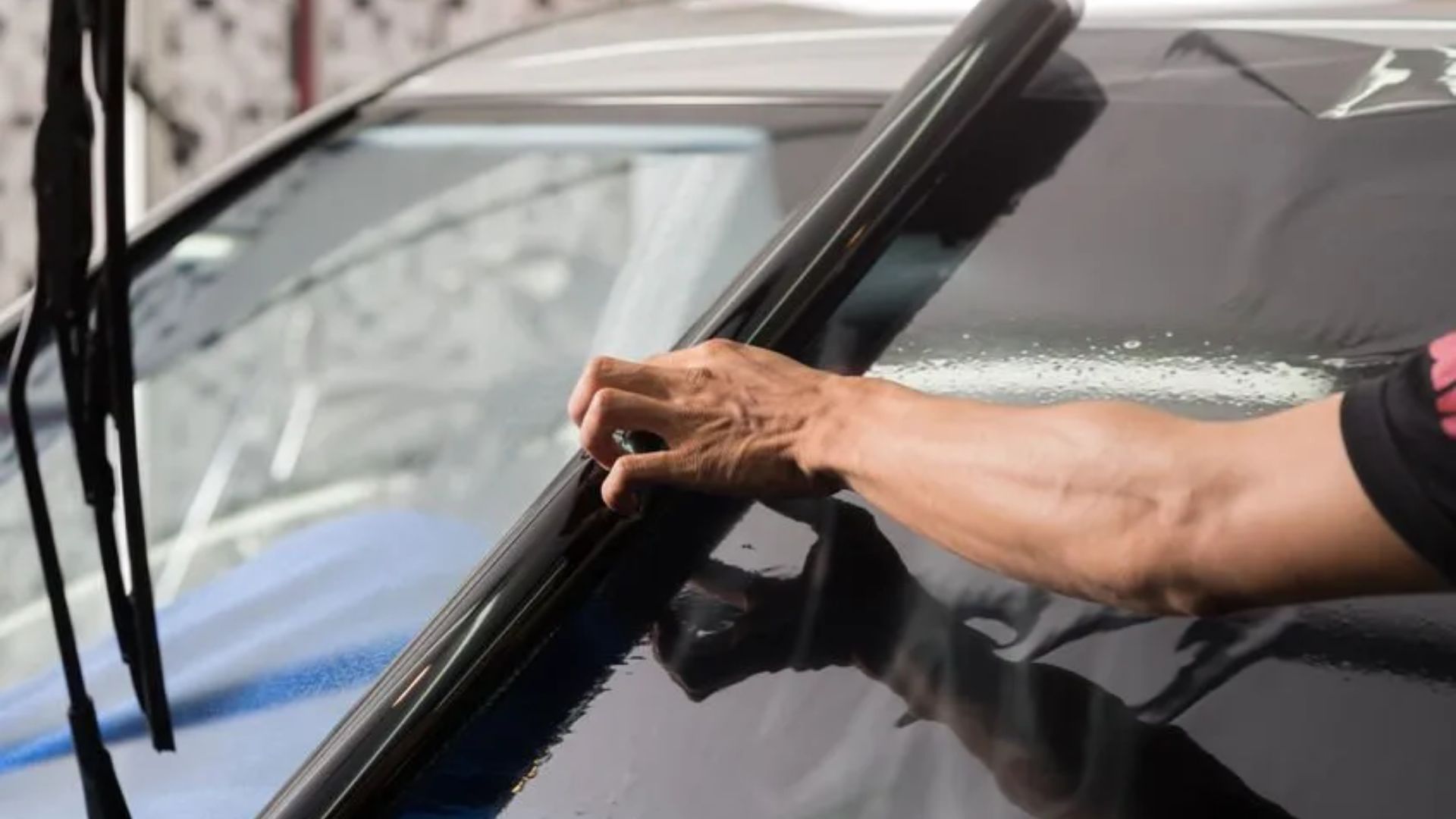
Introduction
Choosing the right auto or vehicle glass tinting option for your vehicle will greatly improve your driving experience. Not only does it improve the aesthetic appeal of your car, but it also offers numerous functional benefits such as increased privacy, reduced glare, and protection against harmful UV rays. However, with a myriad of tinting options available, making the right choice can be daunting. This blog will guide you through the different types of Auto Glass Tinting options, helping you decide which one is right for your vehicle.

Understanding Vehicle glass tinting
Vehicle glass tinting involves applying a thin film to the interior or exterior of the car windows. This film can vary in color, thickness, and material, each providing different levels of protection and benefits. The primary purpose of window tinting is to reduce the amount of sunlight and UV radiation that enters the vehicle, which can protect the car’s interior and its occupants.
Types of Vehicle glass tinting
Dyed Window Tint
Dyed window tint is one of the most cost-effective options available. It consists of multiple layers of dyed film that absorb sunlight. While it doesn’t offer as much heat reduction as other types, it provides a good level of privacy and reduces glare. However, the dye can fade over time, diminishing its effectiveness and altering its appearance.
Metalized Window Tint
Metalized window tint contains tiny metallic particles that reflect sunlight, providing a high level of heat reduction. This type of tint is durable and effective at reducing glare and UV radiation. However, the metallic nature of this film can interfere with electronic signals, such as GPS and cell phone reception, which can be a significant drawback for some drivers.
Carbon Window Tint
Carbon window tint is known for its matte finish and non-reflective appearance. It effectively blocks a significant amount of UV rays and reduces heat inside the car without the potential signal interference associated with metalized tints. Carbon tints are durable and do not fade over time, making them a long-lasting option.
Ceramic Window Tint
Ceramic window tint is one of the highest quality and most expensive tinting options. It contains ceramic particles that effectively block UV rays and heat without affecting visibility. Ceramic tints are known for their clarity, durability, and non-reflective nature. They do not interfere with electronic signals and provide superior protection compared to other tint types.
Hybrid Window Tint
Hybrid window tint includes dyed and metalized films to provide a balance of benefits from both types. It provides good heat and UV protection, reduces glare, and does not interfere with electronic signals as much as purely metalized tints. Hybrid tints are a versatile and affordable option for many drivers.
Factors worth Considering While Choosing Vehicle glass tinting
Legal Regulations
Different locations have different laws governing the darkness and reflectance of window tinting. It’s essential to check your local regulations to ensure that the tint you choose complies with the law. Installing a tint that is too dark can result in fines and may require you to remove it.
Climate
Your local climate can have an impact on the window tint you choose. If you live in a hot, sunny region, you may prioritize tints with higher heat rejection properties, such as ceramic or metalized tints. In cooler climates, a basic dyed tint may be sufficient.
Privacy and Security
If privacy is a major concern, you can choose a darker tint. Tints can also provide added security by making it more difficult for potential thieves to see inside your vehicle. However, ensure that your chosen level of darkness complies with legal standards.
Budget
Your budget will also play a crucial role in determining which tinting option is right for you. While ceramic tints offer the highest quality and protection, they are also the most expensive. Consider your budget and weigh the long-term benefits of each type of tint.
Aesthetic Preferences
Different tints can alter the appearance of your automobile. Some people prefer the sleek, dark look of carbon or ceramic tints, while others may prefer the subtlety of a lighter tint. Choose a tint that complements the style and color of your car.

Conclusion
Selecting the right vehicle glass tinting option for your vehicle involves considering various factors, including the type of tint, legal regulations, climate, privacy needs, budget, and aesthetic preferences. Each type of tint offers unique benefits and potential drawbacks, so it’s important to weigh these aspects carefully. Whether you prioritize heat reduction, UV protection, privacy, or appearance, there is a tinting option that will meet your needs and enhance your driving experience. Take the time to research and choose wisely, ensuring you enjoy the maximum benefits of your new auto glass tint.



